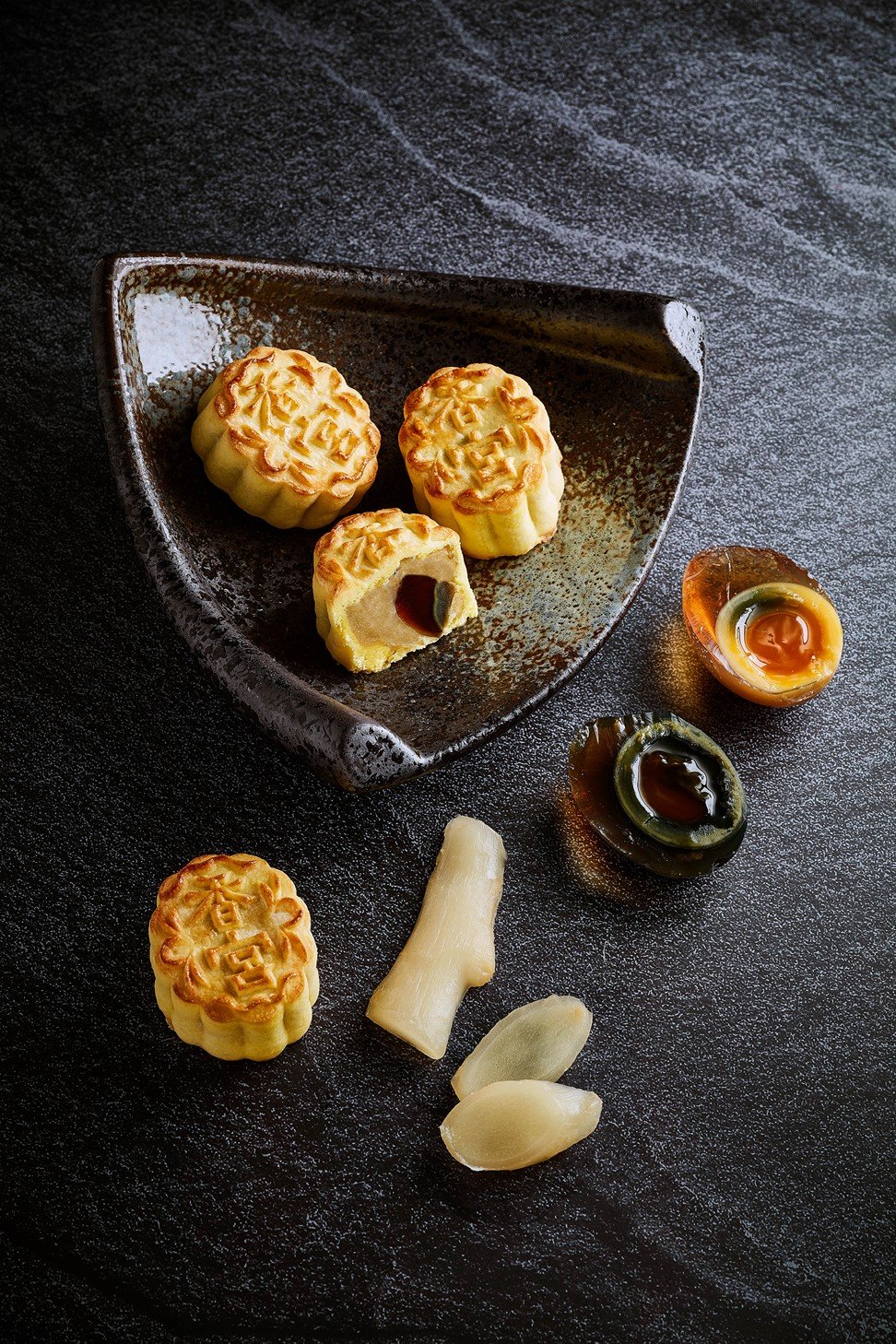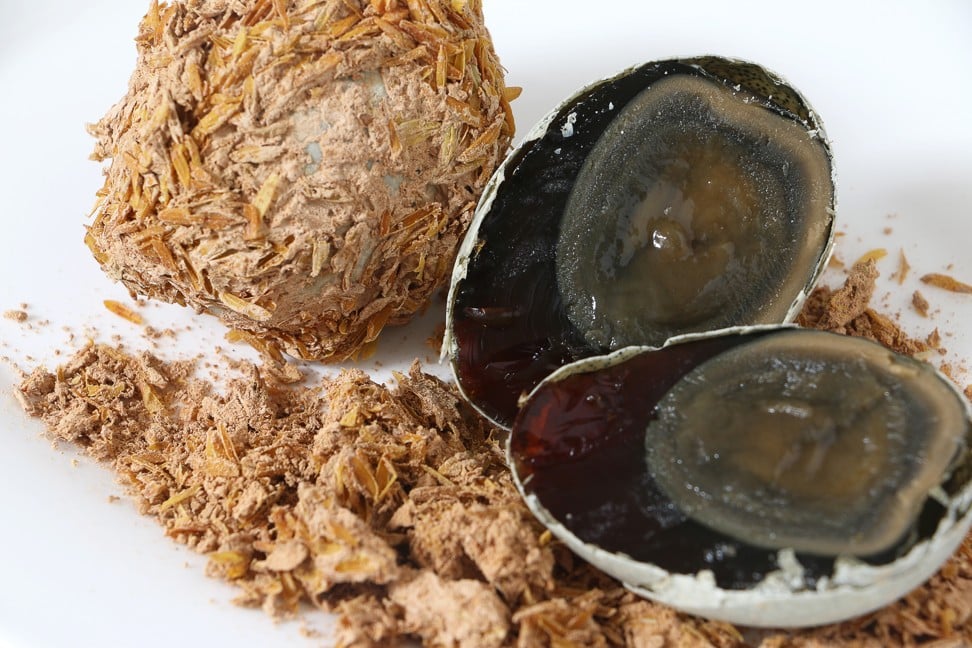Century eggs: How are they really made, and where are they from?
The preserved egg is served in the most humble of establishments through to restaurants with three Michelin stars. Here’s how to spot a quality one

Considered a delicacy in Hong Kong, preserved eggs would not win an award for visual appeal, with their translucent dark exterior that has a jellylike texture, and a greenish-black oozing yolk with a hint of ammonia. James Corden, host of The Late Late Show with James Corden, frequently uses these eggs in his “Spill your guts or fill your guts” segment, threatening to feed them to his guests if they don’t answer personal questions.
What Corden doesn’t know, however, is that when the eggs are of good quality they taste absolutely delicious.
Also known as century egg, hundred year egg, thousand year egg, skin egg and black egg, the preserved egg is served in the most humble of establishments through to restaurants with three Michelin stars.
View this post on InstagramA post shared by Darren (@darren.tsai) on
They also have a history dating back to the Ming dynasty, most likely originating in Hunan. “In China, methods have been developed to preserve eggs in such a way as to cause chemical and physical changes in both egg white and yolk, imparting a new flavour … the earliest known description of an egg preservation method is that of Wang Zizhen during the Ming dynasty,” wrote Hou Xiangchuan in his article Hunger and Technology: Egg preservation in China, for the Food and Nutrition Bulletin, a peer- reviewed academic journal.
A common misconception is that the preservation method originally involved horse urine
Like many foods or dishes with a long history the origin of preserved eggs is said to be accidental. There are several variations. One tells the tale of a discovery of duck eggs by a homeowner – in a shallow pool of slaked lime used for mortar two months after construction – who decided to taste them. Another involves a man who accidentally spilled his tea with tea leaves in the ash where his ducks laid their eggs. On cleaning the ash later he found some eggs he had previously missed, and decided to try them. Most variations agree that on trying them the discoverer thought the flavour would be improved with the addition of salt.
A common misconception is that the preservation method originally involved horse urine. Interestingly the direct translation of the name for the eggs in Thailand and Laos is “horse urine egg”, most likely due to the associated ammonia smell.
Traditional preservation methods involving raw eggs, ash, salt, slaked lime, clay and rice husks, are still practised. However, with more understanding of the chemistry behind the process, there have been simplifications, which achieves the same result in weeks instead of months.
While chicken and even quail eggs can be used, Hou writes that duck eggs produce the best results. Duck eggs are used by Kowloon Shangri-La Hong Kong and Four Seasons Hotel Hong Kong.
As for telling a quality product from an inferior one, Cheung Long-yin, executive Chinese chef, Kowloon Shangri-La says, “You cannot judge the quality by its appearance. A folkloric [and unproven method] is to tap it lightly with two fingers. If you feel it bounce outward as if there is a vacuum between the shell and the egg, it is of good quality.”
Once cut open it is a different story, says Cheung, “It gives an acquired fragrance of egg, with a slight odour of ammonia, but tastes like egg on the palate with a creamy and succulent flavour. It should have a slightly runny, gooey, creamy egg yolk, and small traces of the yolk stick to the knife after cutting.”
It should have a slightly runny, gooey, creamy egg yolk, and small traces of the yolk stick to the knife after cutting
A typical way to enjoy the eggs is by pairing with pickled ginger. “There are several elements,” says Four Seasons’ executive Chinese chef Chan Yan Tak. “The egg is alkaline from its preservation process, and the acidity in pickled ginger brings it to a balance. In terms of texture, the egg is silky smooth, so when you eat it with crunchy pickled ginger, it enhances the flavours.”
They are also served as a topping for congee, said to be a good introduction to the eggs for novices. Numerous dishes also include the eggs. In Shanghai and Taiwan they are combined with cold silken tofu, light soy sauce, young ginger and sesame oil. In Hong Kong they can also be found in pastries as well as mooncakes.
Kowloon Shangri-La is now serving “golden” preserved eggs, which have a more attractive golden albumen, an orange yolk and milder taste. No doubt more appealing to overseas guests.

The eggs are said to work with a full-bodied Bordeaux or sparkling wine with a larger bubble.
Where are Singapore noodles from? How are century eggs made? Are French fries improperly named? And what’s the final verdict on where tikka masala was created? With the Origins series, STYLE delves into the often surprising beginnings of iconic dishes or foods, how they’ve evolved over time and the many ways they’re enjoyed today.

